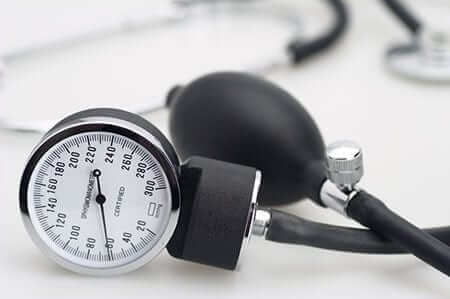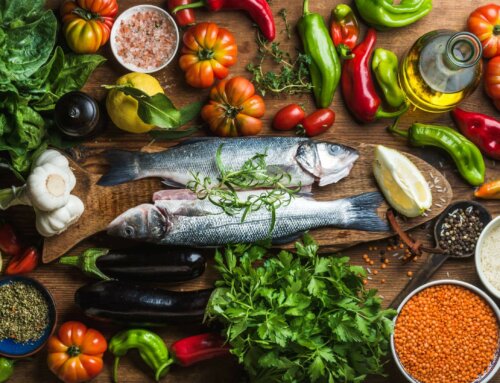The leading cause of death in the United States for men and women is still heart disease. This includes heart attack, stroke and heart failure. 67 million Americans have hypertension, which is a major risk factor in heart disease, along with diabetes. According to the CDC, “1 in 3 adults in the United States suffer from high blood pressure, with many of them still uncontrolled.”
This week in our diabetes self management skills program, I met with a 60 year old African American man who was having trouble controlling his blood sugars, along with his blood pressure. He also had put on 30 pounds in the last 4 years. He admitted that he had diabetes and hypertension for over 15 years, yet had never even seen a physician due to lack of health insurance. He had driven an 18 wheeler truck all those years (a lot of sitting!) and never ate right or exercised. Two years ago he began to suffer from pain and numbness in his feet, which is a real challenge for a truck driver! He also recently met a new romantic interest who encouraged him to see her physician, since she has diabetes and hypertension as well. She had already been educated and is fully aware of the possible complications of uncontrolled hypertension and diabetes. Obviously, he is smitten with his new relationship, since he came for diabetes counseling after seeing her doctor. After taking a complete diet history, which consisted of: creamy clam chowder with sausage or biscuits and gravy with root beer for breakfast, a large Whopper packed with pickles and ketchup with fries and a coke for lunch, and a bowl of canned soup or chili with a Gatorade and Whoopi Pie for dinner, I knew we would have a long session. His parents both passed away from strokes in their mid sixties, and I think he was finally getting the message. He grew up in Alabama eating foods that are heavily salted and fried!
Here are some of the tips we talked about to get him back on track with healthier food selections to reduce his risk of future cardiac complications:
- Sodium intake: Although not everyone is salt sensitive, most of the literature still suggests sodium intake is crucial for blood pressure control. The most recent blood pressure guideline recommended by the ADA for people with diabetes is 140/80 or less. The latest recommendation for sodium intake for people with diabetes is 1500mg to 2000mg per day, with the lower end being more desirable. Most Americans continue to eat 4000mg or more daily! One average sour pickle has 2000mg alone! We discussed reducing sodium by not adding any salt to his food and trying salt substitutes. Salt substitutes contain potassium chloride instead of sodium chloride. Salt substitutes can also interfere with certain potassium sparing blood pressure medications; please check with your health care provider before trying these alternatives. We discussed meat tenderizers which are full of salt, as well as condiments, luncheon meats, bacon, sausage, canned soups, canned vegetables, prepared chicken, marinades, Asian sauces, BBQ sauces, chips, salted nuts and broth. He finally understood that sodium is often hidden in food.
- Calcium, Magnesium and Potassium: Adding foods that contain these minerals can often help lower blood pressure. Pistachio nuts in the shell and other tree nuts in moderation contain magnesium, which can lower blood pressure, increase insulin sensitivity, and improve glucose metabolism. They have cardiovascular benefits, contain lutein, B-carotene, tocopherols and have anti-inflammatory abilities. Nuts have protein and monounsaturated fat to help you stay satiated; they also contain fiber. A recent study suggests that 2-4 tablespoons of natural peanut butter daily can also improve insulin sensitivity. Peanut butter is loaded with calories, so you must factor that into your daily allowance. Leafy greens including spinach, kale, Swiss chard, romaine lettuce and mustard greens contain high amounts of potassium, magnesium, folate and help naturally lower blood pressure. They increase collagen production, which is good for skin growth and repair, and decreasing damage from free radicals. All berries have blood pressure lowering properties and are low in carbohydrates and calories. They contain anthocyanins, an antioxidant which can help preserve your memory. Berries can help eye sight and decrease muscle aches and soreness. A cup of berries is a serving size with lots of fiber. Beans including lima, navy, pinto, kidney, black, red, chili, white and cannellini are high in calcium, magnesium and potassium for improved blood pressure control. They have fiber for heart and diabetes health. Uncooked beans should be soaked overnight. If you buy them in the cans you should rinse them to remove the extra sodium. Unsalted seeds including pumpkin, sesame and sunflower are loaded with magnesium, zinc, vitamin E and folate, to aid with reducing blood pressure. Eat them in the shell to help reduce portion size, and stick to a ¼ cup serving. Soybeans or Edamame are great sources of potassium and magnesium. Purchase them in the pod which slows your eating.
- Reduce stress levels. He had just retired due to the neuropathy in his legs and feet, which lowered his stress level immediately. We talked about adding mediation, Tai chi, getting a pet, deep breathing, counting to ten or volunteering to bring down stress daily levels even more. He indicated that he might be interested in consulting with a therapist, since he had not dealt with so many emotional aspects of his life for years.
- Exercise: He was a high school football/basketball player and knew the benefits. Aerobic exercise will reduce his blood pressure as well as glucose levels. Although his feet were extremely numb, he was willing to try a recumbent (sitting) bicycle or use the swimming pool for walking (wearing pool shoes for protection). Chair exercises and stretches were also suggested as well as possible physical therapy.
- No Smoking! This was no surprise, since smoking increases plaque formation in the arteries, constricts blood vessels, increases heart rate and the chance for peripheral vascular disease. Luckily he had already quit smoking a few years ago.
- Weight reduction: We chatted about his 30 pound weight gain and he knew he would feel better when he achieved moderate weight loss. As in diabetes control – a 5-10% weight loss is very effective at reducing blood pressure. He was willing to start eating on a schedule and make healthier choices. We talked about small changes instead of “dieting”. He could give up all sweet drinks such as sodas, fruit juice, sweet tea, lemonade and power drinks, which will take the weight off quickly. I recommended small changes like adding skim or 1% milk to his coffee instead of using flavored creamers, which has an extra 100 calories and corn syrup or adding shots of flavored syrups. He was willing to try nutmeg, cinnamon and vanilla or almond extract for sweetness, without the calories. He wanted to start eating yogurt for breakfast; we agreed on plain Greek yogurt with nuts and fresh fruit, instead of pre-sweetened yogurt with fruit on the bottom. I suggested an open face sandwich with one slice of bread, and adding more vegetables for fiber, bulk and flavor instead of the extra bread, meat and cheese. He agreed that sugary cereals were not the best choice and decided to try Cheerios, slow cooked oatmeal or Bran cereals. We talked about portion sizes and not needing to have a scale to weigh food, but using his hand and eyeballing amounts. These little tricks should help him start to lose 1-2 pounds a week.
- Dash diet or Mediterranean diet. I mentioned that these eating styles were successful at lowering blood pressure. These plans include fresh fruits, vegetables, whole grains, low fat dairy, cooking with olive oil and limiting sodium to 1500mg a day. It includes lots of fish and minimal amounts of red meat.
- Take your blood pressure medication daily and correctly. We discussed a condition called “Resistant Hypertension”. Although it is rare, it is when your blood pressure never achieves control, even with multiple blood pressure medications. Physicians can perform a procedure which interrupts the nerve endings in the kidney – this can eventually lower blood pressure. People who have essential hypertension often require up to 3 blood pressure pills to do the trick. Many patients may choose not to take them or can’t afford them, and they never achieve adequate control. Some people just forget to take them. There are ways to remember your medications, including getting a partner involved, text alerts, watch alarms or using an automatic pill dispenser. Use tricks to help you. Always inform your physician if you decide not to take your medications.
- Take your blood pressure at home. He is willing to purchase a home blood pressure monitor, since he says he “stresses when he goes to the doctor and it is unusually high”. This is a common problem called “White Coat Syndrome”, so documenting numbers at home is frequently helpful to your doctor.
- Watch your alcohol intake. Drinking large amounts of alcohol will mess with your blood pressure as well as blood sugar, so discuss your alcohol intake with your physician.
Luckily his new lady friend attended the appointment. Her presence seemed to motivate him to make even more changes. Hopefully his next visit will show great improvement in his blood sugar, blood pressure and weight; he is sure to feel and be healthier! You can do it too!
NOTE: Consult your Doctor first to make sure my recommendations fit your special health needs.







Leave A Comment